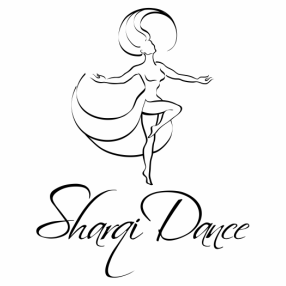|
When I say that “dance is poetry in motion,” I do mean it literally. Because dance is a language of its own… after all, is it not a way of communicating feelings using our bodies as the medium?
Studying dance actually does take us through many of the same processes as learning a new language. The first step is to learn the alphabet—becoming familiar with the shapes of the letters and properly enunciating the sounds they represent. In belly dance, our “alphabet” is composed of “isolation components”—those simple, single-plane-and-direction isolations that can sometimes be used by themselves, but that also get strung together to form multi-plane-and-direction isolations, from the most basic to the most complex. These “composite isolations” are our words, along with the traveling steps and other non-isolation movements that we use. It is important to learn and practice those “words” enough for them to become ingrained in our muscle memory, so that we can develop a movement vocabulary large enough to interpret a variety of sounds in the music we dance to. Much in the way that the vocabulary in a language is a key defining element, the types of movements that we do—and the way we do them—are part of what differentiates one genre of dance from another. Music is another key element, as it dictates the types of movements we can do and when, therefore providing a structure for the sentences we create with our movements, like grammar and syntax! Transitions and accents act as punctuation marks and facial expression, body language, and stylizations can serve as our adjectives... Achieving true mastery in any genre of dance takes practice and immersion, much like achieving fluency in a language. It takes years of work and dedication, and there are no shortcuts! We can’t skip straight to layering multiple moves together and trying to add feeling and stylization if our body can’t perform the movements—the dance will not be recognizable, in the same way that if we attempt to piece together a thought in a language before knowing the words we need to use, we will not be understood. On the other hand, we also don’t need to get stuck practicing a move to the point where it is being perfectly executed exactly the same way as a dancer who is native to this dance before moving on to layering, expression, and stylization. Some moves can take years of practice before they can be executed at a professional level, and it can take years of study and immersion before they can be executed with the same nuances seen on native dancers. We call that dancing with an “accent.” Having an accent in a language doesn’t necessarily make you any less fluent. The world is full of multilingual people who can express complex thoughts and ideas in their non-native languages even if they do so with an accent. Western belly dancers need not be afraid of dancing with a Western accent. So long as they are using belly dance vocabulary, grammar and syntax, they are belly dancing! These parallels are a great way to think about how we learn dance and to keep perspective when we become frustrated with the challenges that pop up. They can also provide some context and a framework for our goals. Someone who just wants to learn how to say a few words isn’t going to need to spend as much time studying as someone who wants to learn how to speak a language fluently. But regardless of individual goals, the ideal class should provide students with all the tools they need to achieve fluency, so that they too will be able to create poetry in motion…
2 Comments
1/6/2023 02:56:42 am
I am agree with statement that "dance is a language of its own"
Reply
Leave a Reply. |
AuthorYamê is a Brazilian-American View Posts By CategoryIf you'd like to read more articles by Yamê or SharqiDance's guest authors, please view our blog map here.
Archives
January 2024
|


 RSS Feed
RSS Feed